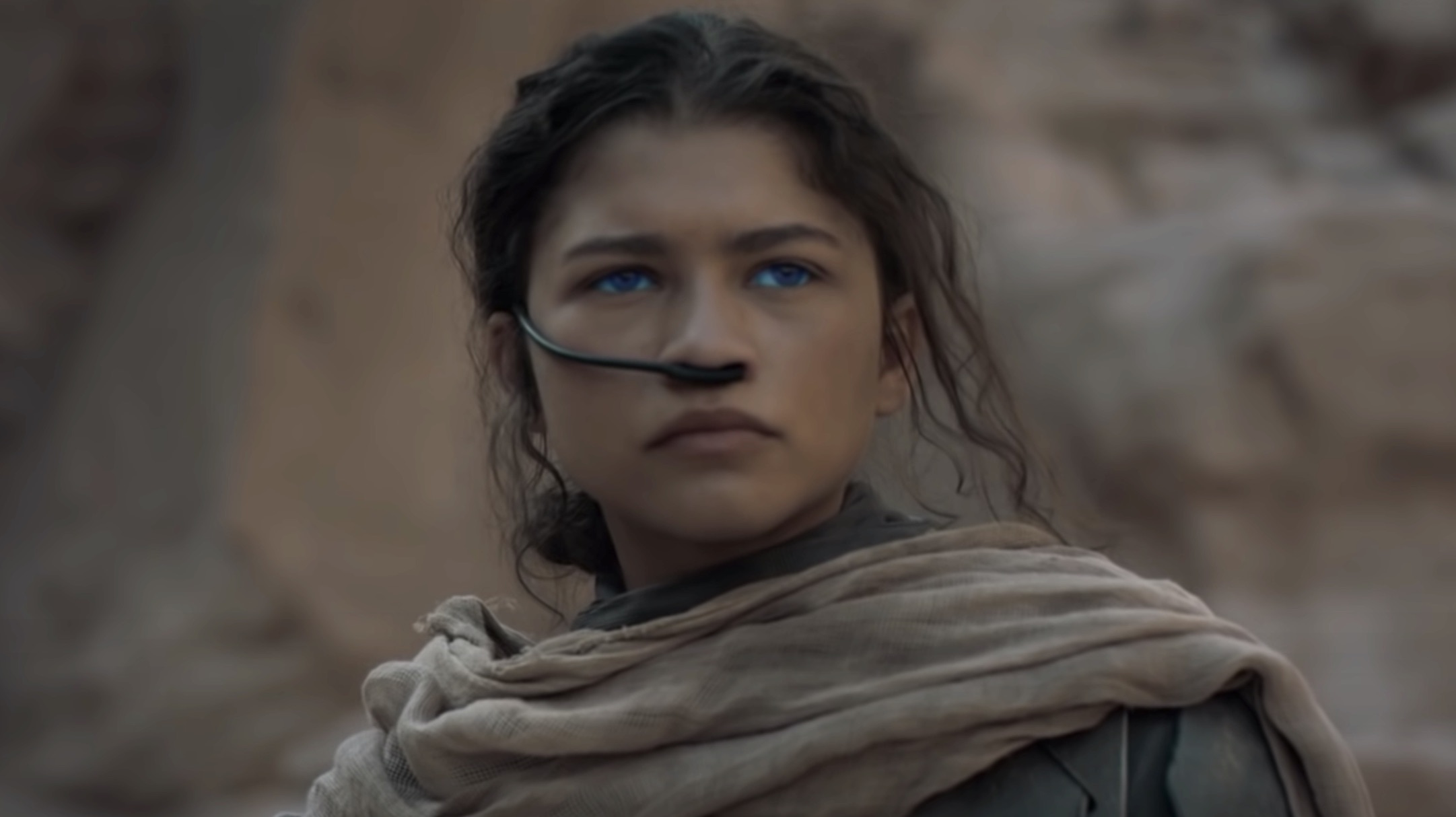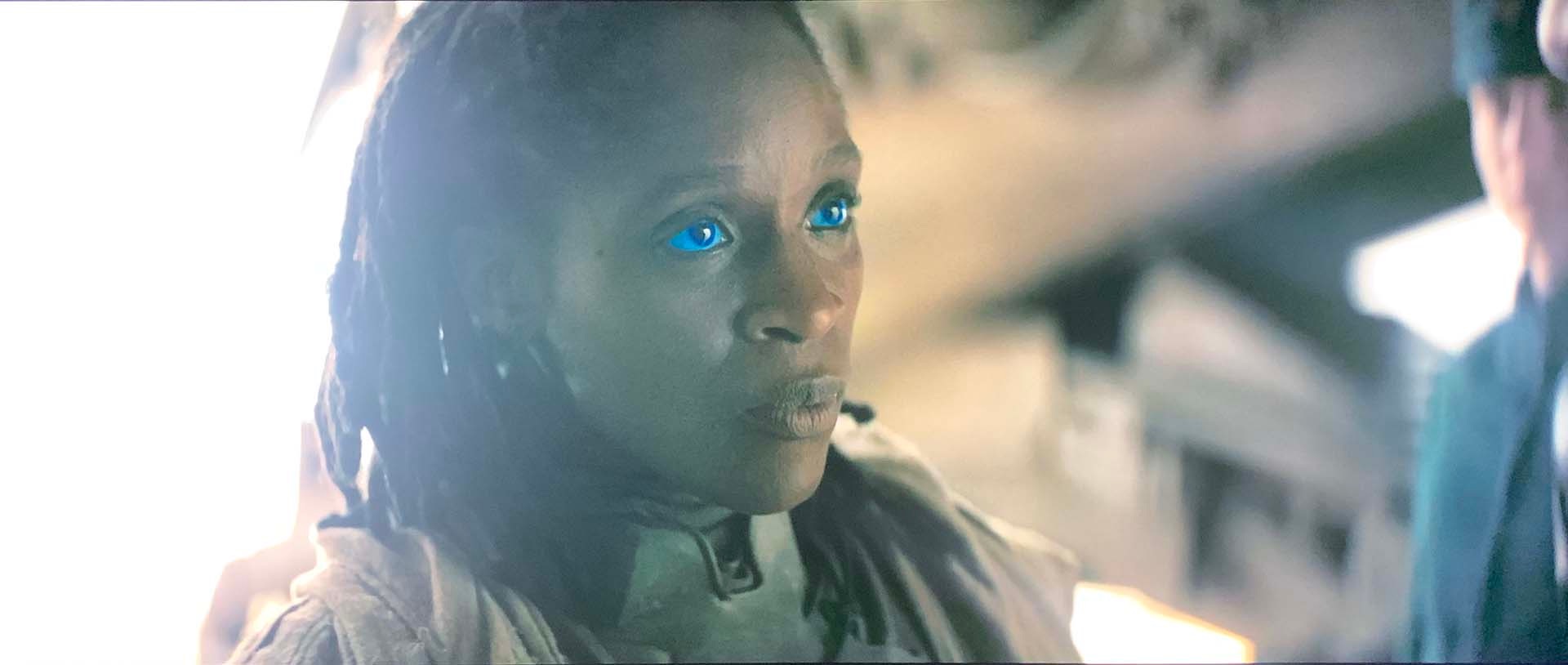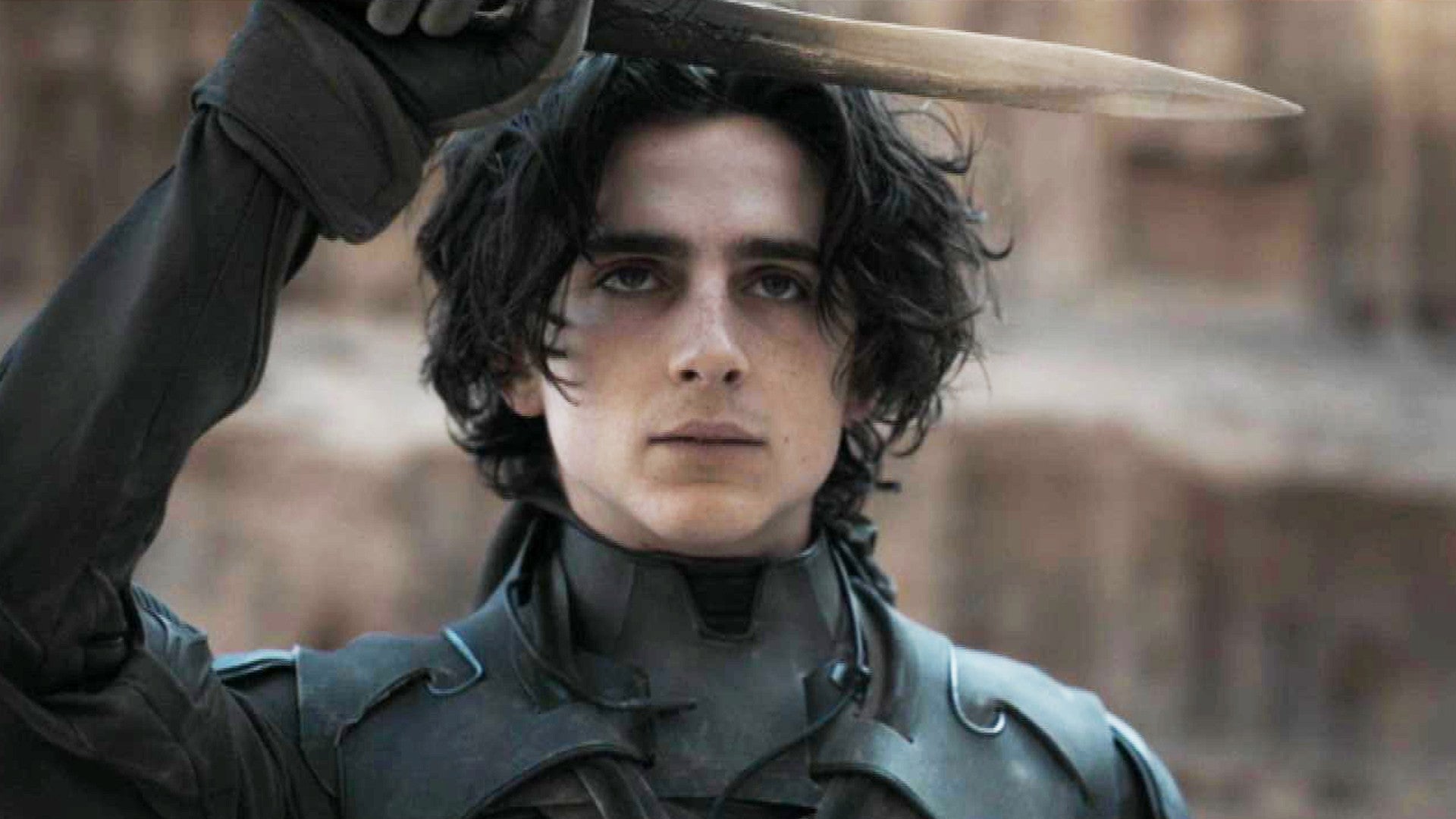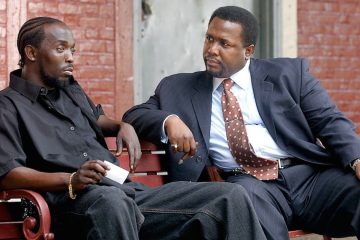Special effects aren’t the only reason why Frank Herbert‘s 1965 sci-fi novel Dune has been so notoriously hard to adapt for film or TV. The first book in Herbert’s epic saga introduces readers to a complex story world that spans across multiple planets, political conflicts, alien technologies, and secretive religions. Squeezing it all into one film — even at 2.5 hours long — was always going to be a tough job.
The 2021 adaptation of Dune by writer-director Denis Villeneuve and screenwriters Eric Roth and John Spaights solves this problem by cutting the story of the Dune novel in half. Although this choice angered some critics who feel like the movie “just ends in the middle of the story,” it actually ends at a point that satisfies the script’s central question. So while this choice may not be satisfying in the traditional “what happens next” sense, it does work in the “what change is this film trying to document” sense.
But in order for Dune to work at all, its screenwriters had to tell a lot of story at a relatively brisk pace. (In fact, while I thought pacing was one of the places where Villeneuve’s Blade Runner 2049 fell short, I’d say he just about nails it in Dune.)
So, why does Dune work so well as an adaptation?
Let’s look at seven ways Villeneuve, Roth, and Spaights solved some of the biggest problems in any epic adaptation: exposition, story structure and the pace of information.
WARNING: SPOILERS AHEAD for Dune (2021).
Establish Your Three Core Conflicts Early

There are three core conflicts that drive any story:
- Internal (character vs. her/himself)
- Interpersonal (character vs. other characters)
- External (character vs. outside circumstances: nature, science, war, time, etc.)
The internal conflict is usually a flaw that the character needs to overcome in order to resolve the other conflicts in the story, which makes the story a document of the way the character changes.
The interpersonal conflict usually stems from opposing worldviews, desires, or needs between two or more characters. Even though they may be on the same side, what they want / need / believe makes it hard for them to work together or trust each other, which they’ll need to do in order to overcome the external threat.
The external conflict is usually the influence that requires the character to take action in the first place. If not for the external conflict, the character’s life would continue on its current path, but now everything the character values is at risk unless s/he can stop it. When external conflicts are represented by villains, those villains are usually embodiments of the two sides’ opposing values. (Think Voldemort in Harry Potter: yes, he’s the villain, but his lethal hatred of non-magic people — which manifests as a growing taste for genocide — is the actual external threat, because that uprising is bigger than Voldemort himself.)

In Dune, Villeneuve establishes the three core conflicts right from the opening scenes:
First, Chani (Zendaya) speaks directly to the audience in voiceover, explaining three crucial pieces of information:
- Chani tells us that her desert planet, Arrakis — also known as Dune — is beautiful
- Arrakis is also home to the universe’s most important resource: spice, a hallucinogen that helps navigators chart paths between the planets; without it, commerce between planets would be impossible
- The Emperor gave control of Arrakis to the Harkonnens, who have grown immensely wealthy off the spice while terrorizing the the planet’s natives, the Fremen — “Their cruelty to my people is all I’ve known” — and she expects every new outsider who colonizes Arrakis to be just as bad as the next
Already, we understand the stakes of the story’s external conflict (control of the spice, and of the universe), and the interpersonal conflict between the Fremen and their colonizers. We also have a reason to care about what happens to the Fremen, which plants the first seed of our emotional arc as the audience. (More on that in a minute.)

Then the story shifts to Caladan, the homeworld of House Atreides, whom the Emperor has decided will now control Arrakis instead of the Harkonnens. We’re introduced to Paul (Timothée Chalamet), the prince of House Atreides, and his mother Jessica (Rebecca Ferguson), whom we learn is involved with an intimidating sect of powerful women known as the Bene Gesserit.
But all those names and titles are just worldbuilding exposition. What really matters in these scenes?
- Paul dreams of Chani (whom he’s never met) and Arrakis (where he’s never been), and these dreams — which he can’t control — are extremely troubling to him
- Jessica is training Paul to use “the voice,” a super power in which the tone of his voice can compel others into doing exactly what they’re told… except he can’t quite get it right
- Paul is defiant toward the authority of his mentors like Gurney Halleck (Josh Brolin), Duncan Idaho (Jason Momoa), and Gaius Helen Mohiam (Charlotte Rampling), all of whom demand him to conform to rules, norms, and expectations — in other words, interpersonal conflict
- Paul doesn’t ever want to be in charge of House Atreides, but his father, Duke Leto Atreides (Oscar Isaac), confides in him that he didn’t want to be the Duke either — “I found my own way to it. Maybe you’ll find yours.”
- Paul also has no interest in being “the chosen one,” which the Bene Gesserit seem to think he might be, leading Paul to wonder if his life is all just part of someone else’s plan
So, what does this all boil down to?
Paul’s internal conflict is that he feels like he has no free will: he feels like his future is basically pre-ordained, either by the laws of succession within House Atreides or by the mysterious rules of the Bene Gesserit.
And what does this mean to the story of Dune?
It means Paul must decide whether he’s going to live up to any of those expectations or find his own way.
Those are the internal, interpersonal, and external conflicts that will drive the story of Dune. And as you can see, not only do they all interconnect, but Villeneuve manages to establish all of them clearly and memorably within the film’s first act.
Make Your Worldbuilding Feel Organic

For any story to work, your audience needs to understand four things:
- What is the plot? (What do the characters want, and what happens if they fail?)
- Who are the characters, really? (Why do they want these things?)
- What is the story’s world? (What are the rules that govern the story’s outcome?)
- What is the story’s emotional arc? (Why do we want the characters to succeed or fail?)
Stories that are set in our own reality don’t have to worry so much about that last point, but it’s crucial for sci-fi and fantasy stories. That’s because if we don’t understand a story’s world — the rules of how everything in it works and what is or isn’t possible for characters to do — then we can’t really understand what’s at stake.
For example, imagine reading a story about a superhero team… but the author never tells you what the characters’ powers or limitations are. In every scene, you’d have no idea what level of danger a character is actually in, because you don’t know what any of these characters are fully capable of. Yet, on the other hand, if the story opens with a long explanation of every hero’s history, their powers, their weaknesses, and their motivations, then you don’t have a story, you have a Wikipedia article.
The trick is making the worldbuilding in your story feel organic. And for the most part, Villeneuve’s Dune does this extremely well.
It helps that Paul and his family are outsiders on Arrakis, which gives other characters an in-story reason to explain how the world works. Within this conceit, Villeneuve varies the manner and pace in which information is revealed from scene to scene. For example:
- Gurney Halleck warns Paul that the Harkonnens are brutal (mentor conversation)
- Paul’s holobooks teach him about the geology of Dune (academic explanation)
- Liet Kynes demonstrates how stillsuits conserve water (training experience)
Thus, while we intuitively know that life on a desert planet will be dangerous, the film needs to clearly depict the dangers that are specific to this particular world (spice, sandworms, Fremen, etc.) and show us how the solutions that make life on Arrakis possible actually function. Without a clear early understanding of both the threats and the protections, we wouldn’t understand what exactly is at risk or possible in later scenes, like when Paul and Jessica are trying to survive in the desert.
Use Your Audience’s Instincts to Your Advantage

The first time we see the Harkonnens in Dune, it’s a surprisingly brief scene, but it conveys everything we need to know — and one crucial bit more.
In it, Glossu “Beast” Rabban (Dave Bautista) is absolutely enraged that the Emperor would take Dune away from them and give it to House Atreides instead. But Baron Vladimir Harkonnen (Stellan Skarsgård), in all of his grotesque and putrid glory, is playing the long game here, and Mentat Piter De Vries (David Dastmalchian) is on the same wavelength:
Piter de Vries: “Don’t be too sure it’s an act of love”
Beast Rabban: “What does he mean?”
Baron Harkonnen: “When is a gift not a gift?”
The aesthetics of this scene establish that the Harkonnens are bleak, cruel, and terrifying, in stark contrast to the humanity of House Atreides. And now, with this simple exchange, we quickly understand three things:
- Paul and his family are heading into a trap
- House Harkonnen is their immediate enemy
- The Emperor is their ultimate enemy
By placing this scene near the beginning of the film, Villeneuve introduces us to some of the key antagonists, but more importantly he introduces us to the existential dread of knowing that there is much more working against our heroes than they realize.
And this means that for the entire second act, no matter how well things may be going for the Atreides on Arrakis, we’re always waiting for the other shoe to drop.
The lesson? Your audience has seen and read hundreds of stories before. You can use shorthand scenes like this to trigger their expectations and set their own emotional arc in motion as they wait for their predictions — and their hopes and worries — to pay off.
Show While Telling

When you have to convey as much information as Dune does, you need to combine your exposition with action.
For example, in an early scene, Paul is practicing his fighting technique against stationary mannequins, and he seems to be somewhat skilled. Then Gurney Halleck arrives to train Paul in more advanced tactics, but Paul doesn’t want to train that day; his mind is on something else. Gurney refuses Paul’s excuse and attacks him anyway. The two men fight, with their blue electronic force fields protecting them from serious injury while indicating what would be lethal damage in red. Paul finally outwits Gurney and “wins,” only for his final blow to land in such a way that Gurney would have killed Paul, too.
What does the audience learn from this scene?
- The expected style of combat in this story’s world
- How good Paul is at combat, but also how much he still has to learn
- His personality conflicts with Gurney (moody teen vs. grizzled veteran)
- How the characters feel about each other (pseudo-grandfatherly)
- The setup of a recurring phrase (“I recognized your footsteps, old man”) that will pay off in a later scene
… and much more.
But what’s something we learn without being told?
How the force fields work.
There’s no exposition delivered by a book, a narrator, or Gurney telling Paul to use the force field and reminding him how it works. That’s because Paul would already know how the force field works, so it would be condescending and artificial for them to have that conversation just for our benefit. Instead, the film visually shows us how the force fields work while we’re learning everything else in the scene through behavior and dialogue.
In other words, the old writing advice to “show, don’t tell,” isn’t good enough. If you really want to make your exposition memorable, show while telling.
How Many Jobs Can Every Scene Do?

Go back to the list of things your audience needs to understand for your story to work:
- Plot
- Character
- World
- Emotional Arc
Now look back at the three core conflicts that drive your story:
- Internal
- Interpersonal
- External
How many of these points ae moving forward in each scene of your screenplay? The more story points your scene can advance, the better.
Take the sequence in which Duke Leto Atreides leads Paul, Gurney, Dr. Kynes, and some fellow men from House Atreides on a mission to evaluate the efficiency of the spice harvesters.
On paper, your eyes might have just glazed over from reading that because the in-world purpose of the scene sounds boring. But the in-story purpose for the scene is far more important, on multiple levels. Here’s why it works so well:
First, the setup:
In an earlier scene, we have an exchange between Duke Leto and Thufir Hawat (Stephen McKinley Henderson, whom you probably remember as Father Leviatch in the subtly amazing Lady Bird) where Leto reveals his goals and strategy: he wants Dr. Kynes to grant House Atreides more time to get spice production back up to the levels the Emperor demands. And since Leto knows the Harkonnens are trying to sabotage them, he presumes that having an Emperor-approved official like Dr. Kynes out on the sand with them will give them some level of protection from Harkonnen’s threats.
This exchange advances the plot, reveals something about Leto’s character, explains a bit more about the politics of Arrakis (worldbuilding), and acknowledges the external threat of the Harkonnens, all while furthering the audience’s emotional arc: we want Leto’s plan to succeed, but we’re worried that it won’t. (Hey, a 5-point dialogue exchange? Not bad!)
Next, the action:
In the central scene, Dr. Kynes (Sharon Duncan-Brewster) explains how the stillsuits work to the Atreides team. She’s surprised to see that Paul has fitted his perfectly despite never having worn one before, reminding her of a prophecy about the chosen one “knowing your ways,” which reveals that she’s as much of a theologian as she is a scientist.
Once they’re airborne over the spice harvester, Kynes explains how the whole operation works while also pointing out the giant sandworm that’s headed right toward the harvester, how the worm knows the harvester is there, how fast it’s moving, and exactly how much time they have before the harvester needs to be airlifted out of danger. This is basically an info-dump, but the presence of the sandworm turns what would otherwise be an academic explanation into a ticking clock countdown.
Finally the payoff:
From here, we follow the maxim of “what’s the worst thing that could happen right now?”
- the sandworm is headed toward the harvester
- the airlift that’s sent to rescue the harvester is broken
- instead, Leto’s helicopters will need to fly in and rescue the men and sacrifice all the spice on the harvester to the sandworm
- there’s not enough room on the helicopters to save all the men, so Paul suggests jettisoning some heavy defenses from the helicopters, which makes them even more vulnerable to attack
- while urging men to run to the helicopters, Paul inhales spice and starts hallucinating, stopping him in his tracks as the sandworm approaches and giving him dire visions of the future
- at the last possible second, Gurney rescues Paul, and all the humans are saved from the sandworm… but all of the spice and the harvester are lost
- despite all this, Dr. Kynes says she can’t give Leto an extension

In other words, this scene…
- introduces the character of Dr. Kynes, reveals Leto’s heroism as a pilot and nobility as a leader, and reinforces Paul’s key traits as an empathetic problem-solver
- advances the plot by handing Leto a serious setback in spice production
- expands the world by giving us a glimpse of the sandworm’s size and power while making it a direct life-or-death threat for a group of core characters (external conflict)
- heightens the interpersonal conflict between Leto and Kynes (and, as his surrogate, Leto and the Emperor), as well as Leto and Paul
- shows us how the spice triggers Paul’s worrying visions, which are the source of his internal conflict
- heightens the audience’s expectations along our emotional arc (not only did present circumstances go terribly for the characters we’re rooting for, putting them into even more danger, but Paul’s visions of the future bode even worse)
And that’s how you turn a sequence which, on paper, is just boring exposition about spice harvesting into a riveting scene that advances all 7 story points at once.
Escalate Your Setups and Payoffs

Showing your audience how something works is one thing.
Showing your audience how it works under pressure is another.
From comedy to catharsis, every payoff works better if the stakes are higher. But to get there, you often have to establish the “how it works” aspect of the setup at least once or twice previously, under less stressful circumstances.
For example, when it comes to Paul’s ability to use “the voice,” we first see Jessica training him to use it in Paul’s second scene of the film. (This also introduces the audience to the worldbuilding fact that there’s more super-power involved in this story than just spaceships.)
In that scene, Jessica tells Paul to compel her to give him a glass of water by using the voice. (Thematic bonus: they’re casually using water as a prop, when they’ll be dying from an absence of it about two hours of screentime later.)
Paul fails to use the voice properly and Jessica scolds him for it. This is mirrored by the way Gurney Halleck scolds Paul a few scenes later for being lackadaisical about his physical training. In both cases, Paul isn’t taking his abilities — or the threats he might someday need to protect himself from — seriously.
In the film’s second half, Paul and Jessica are captured by the Harkonnens and taken to the desert to die. Suddenly, the only way they can survive is if Paul manages to use the voice properly.
If we hadn’t seen Paul’s capabilities with the voice in the earlier scene, it would feel ridiculous to suddenly introduce it in the film’s second half. But because we know he does have some ability to use it, we’re aware that it’s in his repertoire of possible solutions when this new threat presents itself.
Likewise, we don’t need multiple voice training scenes; we just need as few scenes as we can get away with to make its capabilities clear, so that the audience remembers it when the time comes for Paul to use it in a case of life-or-death.
That’s escalating a setup and payoff.
Satisfy the Audience’s Emotional Arc

What does Paul want?
What do we want?
Those are the two most important elements of the story, because they determine how we’ll feel about the ending.
Again, from a logic standpoint, I totally understand why a lot of Dune viewers feel shortchanged by the film’s ending, which doesn’t conclude the book’s plot.
But what it does conclude is Paul’s internal conflict: The film ends once Paul decides whether he’s going to live up to other people’s expectations or find his own way.
Dune Part 2 — which will cover the second half of the first Dune novel — will continue to explore the book’s plot while undoubtedly introducing new interpersonal and internal conflicts for Paul and his allies. But even if the sequel had never received a greenlight, Dune can still be justified as a self-contained story because, whatever happens next, this particular document of whether or not Paul will change has been concluded.
As for how? That’s up for the sequel(s) to resolve.
Dune also ends by buttoning up the thematic conflict that was introduced by Chani’s opening narration. The very first thing we hear her say is that her planet is beautiful… and then we spend the next two hours seeing it through the eyes of the foreigners who invade, exploit, and at best try to form alliances within it. It’s not until the film’s final scene that someone else finally learns to see Dune the way she does.
And that’s how you satisfy your audience’s emotional arc: by giving them the thematic closure they didn’t even realize they needed.
Related Posts:
- Pulp Fiction‘s Real Genius Is in Its Emotional Arc
- 10 Screenwriting Lessons from ALIENS
- Cobra Kai: How to Build Character Through Internal Conflict


0 Comments